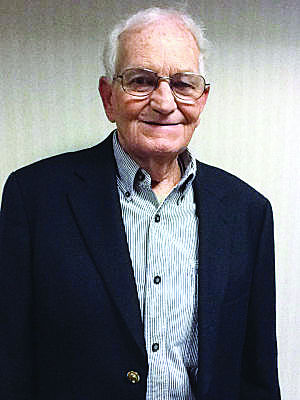Last week’s article was concerned with alcohol — what it is and what it does.
In this “back to basics” article we will take a look at the abuse of alcohol and the disease of alcoholism, shedding light on this most insidious problem which continues in our society.
Alcohol is the most commonly used addictive substance in the United States: 17.6 million people, or one in every 12 adults, suffer from alcohol abuse or dependence along with several million who engage in risky, binge drinking patterns that could lead to alcohol problems.
More than half of all adults have a family history of alcoholism or problem drinking, and more that 7 million children live in a household where at least one parent is dependent on or has abuse alcohol.
Alcohol use by youth under the age of 21 is called “alcohol abuse,” because it is illegal for them to drink alcohol. More than ever before in our society youth are drinking alcohol at a younger age.
It is estimated that six out of ten youths between 13 and 18 years old occasionally drink alcohol beverages.
More alarming is that 100,000 ten and eleven year old youth in the U.S. get drunk once a month. This is most probably a result of past and present generations viewing drinking as socially acceptable, even though alcohol is a major problem for our country.
As mentioned in my previous article, people have been drinking alcohol throughout recorded history. People take a drink for medicinal purposes, for social events, and many times as an important part of religious or civil ceremonies.
Alcohol is also consumed with meals by people throughout the world. However, alcohol has an extremely high potential for abuse. This is primarily due to offering a very tantalizing promise.
With mild intoxication, many individuals become more relaxed and carefree; and are able to socialize with others. Problems in their lives seem to fade away into the background.
As alcohol lowers the inhibitions of the person, they are able to say and do things that they would not do if not under the influence of the drug; which in turn leads to risk taking behaviors; such as driving and drinking and other extremely risky behaviors.
This is the “promise” of a depressant drug as used by humans, and thus the reason that people drink.
This leads us to the reasons why our youth begin drinking alcohol beverage in the first place. In my research, as well as other colleagues in the field, youth have given me answers as to why they begin drinking; the top three being, 1) “to look cool,” 2) “to see what it’s like,” 3) “because other kids are doing it.”In other words, young people being abusing alcohol out of curiosity, to feel good/reduce stress/relax, to fit in, and to feel older.
Conversely, many young people make a choice to not begin drinking alcohol. They know that it is risky for them to do so.
Reasons that they give for not beginning drinking are: it can make them sick (like throwing up, passing out, or worse), it can hurt their ability to make good decisions, it can make them do things that are embarrassing, it can get them into trouble (with parents or police), and it can be addictive (like the person may start needing alcohol just to feel good).
Drinking alcohol by underage youth is extremely disastrous as it is a factor in nearly half of all teen automobile crashes, the leading cause of death among teenagers. Alcohol use also contributes to youth suicides, homicides, and fatal injuries — the leading cause of death among youth after auto accidents.
It is also a major contributing factor in sexual assaults and “date rapes,” and unprotected sex among youth; increasing their risk for contracting HIV or other transmitted diseases.
Of most major importance concerning alcohol abuse is that it may lead to the disease of alcoholism. Alcoholism is a disease; made so by Dr. Marvin Block ( a major pioneer in the field of alcoholism treatment) convincing the American Medical Society (AMA) to make it so in the late 1950’s. It is a disease, because it destroys body tissues, it progresses (it always gets worse), and has no known cure.
It involves physical dependency and loss of control. Like other diseases, it can be arrested. But worse than most other diseases, it not only attacks the body physically but also mentally, socially, and spiritually. The key word to place on alcohol is “addictive.” Alcohol is a highly addictive drug; anyone can become addicted to it.
If forced into addiction in a laboratory setting, the withdrawal symptoms would prevent most people from ever wanting to get to the addictive stage again. The 10 to 15 percent who would repeat the action are alcoholic, alcohol-dependent persons. There is a difference.
Most people who choose to drink will drink sociably and responsibly all their lives and not become dependent. Yet we know that some people may be pre-disposed to alcoholism. All this means is that nobody knows positively if a person will become “addicted” to alcohol; it’s a risk one takes when they choose to begin drinking.
It gives me much pleasure when people tell me that they have found my book, “MORE Straight Talk: Answers to Questions Young People Ask About Alcohol,” most useful when talking with their children or in educational settings. I am always willing to send you a complimentary copy of the book, if you only e-mail me at [email protected]; or you may purchase it through your favored book seller.
Now in its 3rd edition, this book has been a tool used by many over the years. Our youth need to know the truths about alcohol, alcohol abuse, and alcoholism…the basic truths. Until Next Time, Stay Healthy My Friends!




